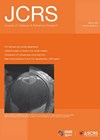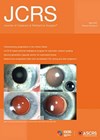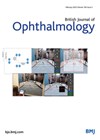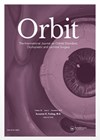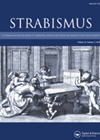BESTi: a new index to detect subclinical keratoconus
In this multicentre, case-control study, the authors develop a new index, named Boosted Ectasia Susceptibility Tomography Index (BESTi), to detect early cases of keratoconus. This index was derived from multiple logistic regression analysis of 22 variables of tomography scans. The...
Does pregnancy cause progression of keratoconus in previously cross-linked corneas?
This is a prospective study involving 24 eyes of 19 patients with stabilised or regressed keratoconus after a successful accelerated cross linking (A-CXL) treatment. Patients were recruited at a routine follow-up visit in the first month of their pregnancy. The...
Endothelial keratoplasty (EK) with anterior chamber intraocular lens (ACIOL) versus secondary posterior chamber lens (PCIOL)
This is a retrospective study of 82 eyes (23 ACIOL, 59 PCIOL) with a history of either pseudophakic (PBK) or aphakic (ABK) bullous keratopathy, who had descemet stripping automated endothelial keratoplasty (DSAEK) with retained or secondary ACIOL, or DSAEK with...
Aflibercept (AF) for age-related macular degeneration (ARMD): four-year outcomes of a ‘’treat-and-extend’ (T&E) regimen with exit-strategy
This is a retrospective observational study of 82 patients, between 2014 to 2016 from Switzerland of treatment-naive patients with nARMD, treated with AF, with specific T&E protocol without a loading phase and predefined exit criteria and patients were observed three...
Ocular adnexal mantle cell lymphoma
In this study the authors compare primary ocular adnexal (OA) mantle cell lymphoma (MCL) with initially systemic MCL occurring over a 30-year period. MCL is a rare form of lymphoma accounting for 5-11% of OA lymphomas and therefore knowledge of...
Computer-assisted surgery in the orbit
In this paper the authors describe the growing use of computer-assisted surgery in ophthalmology. It is already described as a powerful adjunct in neurosurgery and sinus surgery and here they describe their experience of using it for the orbit; specifically...
Complications of limbal stay sutures
There is limited literature describing complications at the limbal suture site. The authors describe two cases with postoperative complications due to use of intraoperative limbal stay sutures. Each case had strabismus surgery at other centres but with presentation to the...
Surgical technique for small-angle hypertropia
In order to treat small-angle hypertropia of <5PF associated with mild / moderate upshoot in adduction, an option is to suture the inferior oblique (IO) belly to the sclera following its natural muscle direction or with anterior transposition. This study...
Factors associated with seeking delayed strabismus surgery
The purpose of this study was to investigate the main reasons for delay in strabismus surgery and assess patients’ motivations to undergo strabismus surgery in adulthood. This was a prospective study in the Republic of Moldova of 91 patients with...
AACE associated with excessive smartphone use
The purpose of this study was to describe a series of cases of acute acquired comitant strabismus (AACE) in children attending online classes on smartphones during the pandemic. Eight children were included with a mean age of 12.5 ±4.2 years....
Cost-effectiveness of orthoptic-delivered screening versus school nurse screening
The authors describe a long-term audit of outcomes and costs associated with referrals from two established neighbouring school-entry vision screening services in the UK over one academic year with one adhering to national UK screening guidelines more closely than the...
OCT findings after strabismus surgery for macular, choroidal and nerve fibre thickness
This study used OCT to investigate the changes in the central macular thickness, subfoveal choroidal thickness (SFCT) and retinal nerve fibre layer (RNFL) after horizontal rectus surgery for patients with strabismus. This was a retrospective study and patients were grouped...


